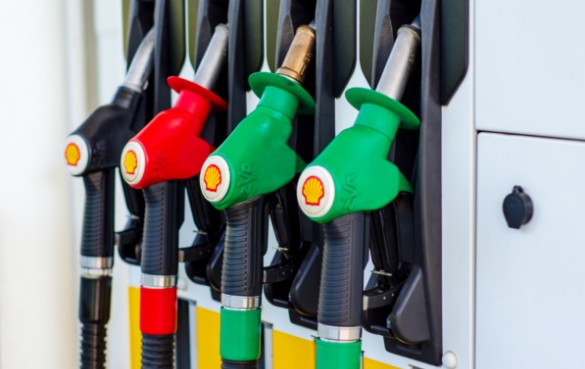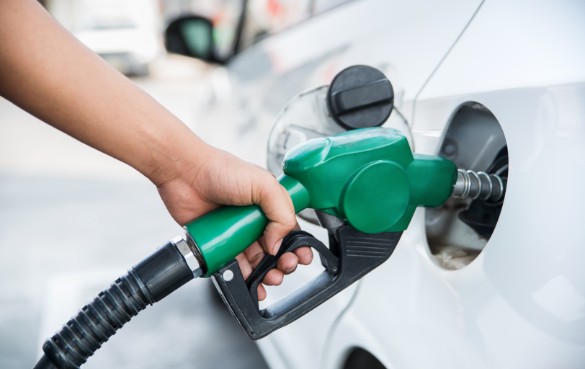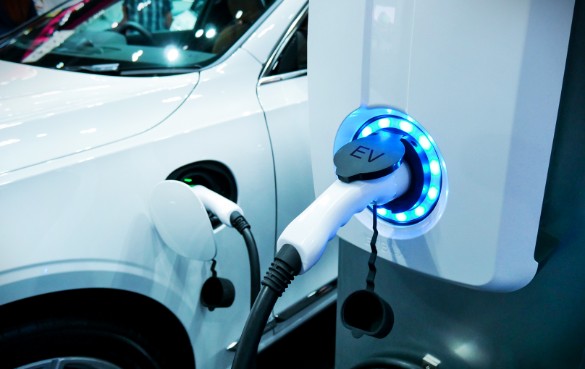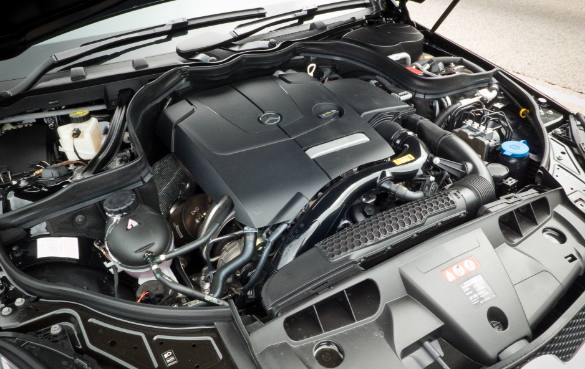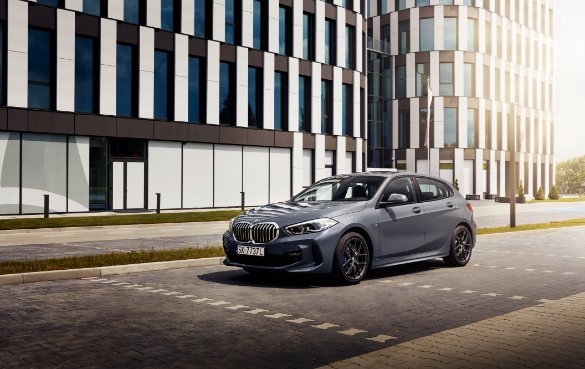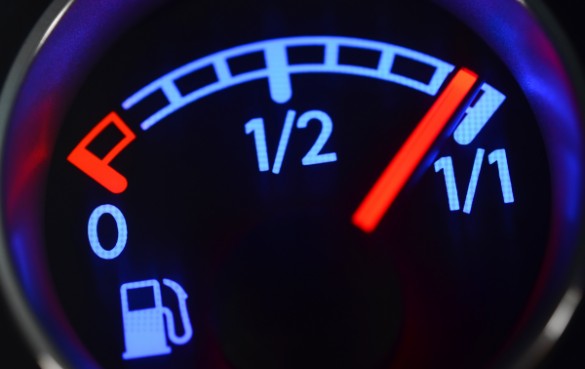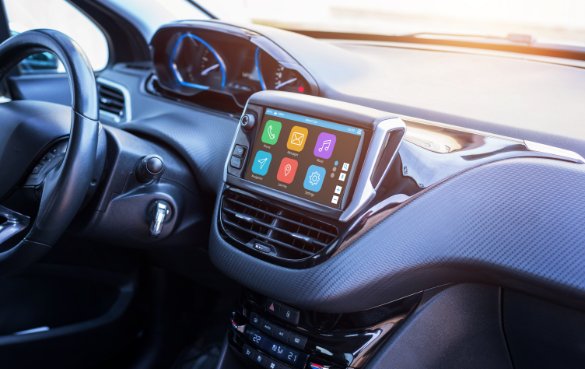How Can We Help You Choose?
Everything You Need To Know About Choosing A New Car
If you’re after a new car, you’ve come to the right place. Here at Vanarama we do things a little differently. We’ll help you choose the best car for your needs without hitting you over the head with a load of car jargon or trying to push you towards a particular model that’s not absolutely perfect for you.
We’ll guide you through everything you could possibly need to think about when choosing your next car lease deal so that, by the time we’re done, there’ll be no doubt in your mind that you’ve made the right choice and you might just be surprised at the incredible cars that leasing makes affordable, so you really can drive that car you want, not just the one you need!.
Help Me Choose Tool
Another way to choose your ideal car is with our unique Help Me Choose tool, which is the quick and easy way to find the right model
Set Your Budget
Rule number 1, right? Setting your budget should be the first thing you do when you’re looking to lease. Cars are an emotive purchase and it’s easy to get carried away, but set a budget that you know you can comfortably afford and stick with it. We’re sure that whatever your budget is, we’ll be able to get you a better car than you think you can afford.
A key thing to remember is to see costs as a whole, rather than just focussing on the monthly payment. The reality is that cars are a depreciating asset, which is why leasing is such a good way of getting into a new car – you don’t have to carry the weight of that depreciation. Think of it like a mobile phone: very few people buy a handset outright because they know how fast the technology is moving, that they’ll want to upgrade at some point, and that their old phone won’t be worth anywhere near what they paid for it in a couple of years’ time.
How To Work Out Your Budget
-
How much you want to pay as a deposit.
-
How much you can afford as a monthly payment.
-
How much you’ll have to spend running the thing – your data, if you like.
We’ll go into additional costs like fuel, insurance, tax, servicing and maintenance a little further down, but it’s so important not to overlook those things when setting your budget. You’ll also be surprised how much they can vary from car to car.
It’s also worth setting aside a little for those wear-and-tear parts that might bring an unexpected cost. It’s mainly tyres, really – you might drive over a nail, say, and need a repair or replacement – but little expenses like washer fluid, wiper blades and oil top-ups can add up too.
One of the benefits of leasing a new car from Vanarama is that you’ll minimise the amount of stuff that can go wrong or wear out, and the things that do will usually either be minor or covered by a manufacturer warranty. You can also choose to include maintenance in your contract, which will cover the cost of servicing and even wear-and-tear parts like tyres, so you don’t have that to worry about.
Petrol, Diesel, EV Or Hybrid?
It’s true that cars are going through a period of significant change at the moment, but actually there’s plenty of time left for good old petrol and diesel yet. It’s true that sales of new petrol and diesel cars will cease in 2030, so you will at some stage have to start thinking about an electric car. But the fact is that fossil fuel cars won’t be “banned” from the road for a long time, and petrol-electric hybrid vehicles will still be sold until 2035.
What fuel type is best for you depends on 1 basic factor: the way you’re going to use your car on an average day.
-
What journeys do you regularly make, to work or the school run?
-
How many miles do you do a day?
-
Are they mainly on a motorway or on slower, town roads?
-
Are you often required to make longer, unplanned journeys?
If your car is mainly for a daily commute to work, and that commute is short, then an electric car will work for you because even those with the shortest ranges will give you more than you need. For instance, the Smart EQ Forfour’s claimed 78-mile range, the lowest on the market, is still likely to get you to work and back, right?
Take a look at our in-depth guide on how to choose between EV, Petrol or Diesel engines.
Pros & Cons Of Diesel
If you’re doing mostly short journeys you’ll probably want to avoid diesel. While diesel cars do offer superior fuel economy to petrol cars, generally, they’re not best suited to regular short trips. Diesel fuel undoubtedly does give you the best economy when doing longer journeys though, with the most efficient offering genuine 50-60mpg fuel economy at motorway speeds. Cars like the BMW 318d, which returns a claimed 58.9mpg average using the WLTP economy test (we’ll get into that test later, too), the 62.8mpg Mercedes-Benz A180d, and the 58.9mpg Ford Focus 1.5 EcoBlue diesel, will all be great for those doing bigger mileage.
Pros & Cons Of Petrol
The advantage of small capacity turbocharged petrol engines is that they offer very similar low speed fuel economy, usually around 40mpg, while being much more refined and quiet than a diesel; diesel engines vibrate more and produce more noise than petrol engines.
The small ‘EcoBoost’ engine that Ford uses in the Fiesta and Focus is a good example of this downsizing trend. It’s only a 1.0-litre and has just 3 cylinders, but it uses turbocharging to produce a decent amount of acceleration and in the Fiesta returns a 57.5mpg WLTP average rating.
That particular engine achieves its impressive economy in part because it also incorporates mild hybrid technology, which is a bit of a misleading term to be honest, but a good segue for us to talk about types of hybrid and electric cars in general. Here goes then.
Choose from our wide range of electric and hybrid options
Hybrid & Electric Cars
You’ve probably seen all kinds of headlines declaring the imminent death of petrol and diesel cars, so you might be wondering whether an electric car is right for you. But you’ve also heard about this range anxiety thing, and about how an electric car will regularly leave you stranded at the roadside with a flat battery. Or worse, stuck in a motorway service station for 6 hours while it charges, with only overpriced snacks for company. It’s all massively exaggerated though.
There’s no doubt that by 2030 electric cars will be the norm, because both the car and technology industries are pouring time and cash into making sure that range anxiety is consigned to history; not only will car batteries be more energy dense, meaning more mileage from a smaller area, but they’ll take a full charge much more quickly.
Currently, there is a wide range petrol-electric hybrid, which combines a petrol engine and an electric motor to give you the best of both worlds, in theory.
There are 3 main types of hybrid car: the plug-in hybrid electric vehicle (PHEV), the hybrid electric vehicle (HEV, and sometimes referred to, confusingly, as ‘self-charging hybrid’), and the mild hybrid electric vehicle (mHEV).
You can read in much more depth about the differences between them here (LINK), but for now here’s a short breakdown of the different types of hybrids, and how they differ from a pure electric vehicle.
There’s lots to know about electric cars and the charging of them, so click here for much more.
What About Engine Size?
It doesn’t really matter anymore. The end.
Really though, there was a time when engine size was the main measure of a car’s prowess and, in turn, yours. If you were into that sort of thing. It’s no longer the case because these days carmakers are quite aggressively downsizing in the search for more efficiency, by making smaller engines with fewer cylinders. The cylinders are where fuel and air mix and explode, pushing the pistons upwards and rotating a shaft that, ultimately, powers the wheels.
In the past, the word ‘turbo’ was associated with high-performance cars too, whereas now they’re used in most engines. A turbo, to briefly explain, forces more air into the cylinder which creates a more potent fuel-air mix, creating a bigger bang, basically, and therefore, more power.
To give you a working example, in 1998 a first-generation Ford Focus with a 2.0-litre petrol engine (and no turbo) developed 128 horsepower and you’d be lucky to get 30mpg from it. Today’s Focus is available with a 1.0-litre turbo engine with 152 horsepower and capable of more than 50mpg, while also being much quicker. Some of that efficiency comes using a mild hybrid system too, which we discussed earlier. Clever stuff, right?
Choosing The Right Body Type
You’ll hear about car body types (or body styles) a lot when looking for your new car, mainly because it’s an easy shorthand way of explaining what a particular car is designed for, and in turn who it’s aimed at. In reality that’s too simple though, because for most buyers there’ll be more than one body style suitable for their needs.
Until fairly recently there didn’t seem to be that many body styles. There were small cars (hatchbacks, generally), big cars (mainly saloons), sportscars and off-roaders. Now it’s quite easy to become overwhelmed by the sheer choice available, and all their names. And some of them a bit daft-sounding, to be honest. Today’s car market is a confusing cavalcade of styles and niches and it’s seemingly growing by the month. Despite this, you might have noticed how most new models tend to look like an SUV. We get into that whole thing properly in this article (LINK), but for now it’s just worth remembering that a huge variety of different body styles are available, most of them in a range of sizes and price ranges.
It really is worth digging into this properly because getting to grips with all the body types will really help you understand what will work for you and probably lead you to a car that you’d not even considered before. Here are more details, including examples of cars of each type.
Take a look at our guide on car body types to help you make the perfect choice.
How Many Passengers?
Things tend to get more complicated if you have more than four people to think about. Most cars will accommodate four humans reasonably well, even the smallest city cars, but add child seats into the mix, or seating for more than four, and your choices are far more limited.
While most larger cars have the five seat belts required to make them ‘five-seaters’ by definition, there are actually very few cars that will accommodate three passengers comfortably across the rear bench. The middle rear passenger draws the short straw.
The Citroen C5 Aircross and Peugeot 3008 are two notable exceptions, and it’s also worth knowing that without exception the sixth and seventh seats in a seven-seat car offer scant legroom. They’re almost always the sort of thing that manufacturers euphemistically refer to as ‘occasional seats’. If you really need proper space for seven or eight people then a van-based MPV like the Volkswagen Caravelle is the best bet by miles.
Virtually all cars have more than enough space for even the tallest up front, but for those in the rear you need to consider not only legroom – knee room, that is – but shoulder room, elbow room, head space, and even how shallow or otherwise the rear windows are. Even quite spacious cars can feel claustrophobic if they’ve been styled with shallower windows for a ‘sporty’ look.
If you have younger children in child seats then the first thing to look at is whether your brand of child seat fits into the car you’re looking at. Most cars have ISOFIX mounts for two child seats, but it’s worth checking whether your particular seat is compatible with the cars you’re interested in. And if you do have two child seats then, again, be aware that in most cars they’ll leave a near unusable space between them for a fifth passenger.
Looking for your next family car? Don't pick your next motor without reading our in-depth guide.
Usage & Practicality
Key issue, obviously: what are you actually going to use your car for? How often will you be driving your new car with a full complement of family or friends and luggage?
Not very, probably. That’s worth thinking about because if the majority of the time your car will just have you, your phone and a bit of accumulated rubbish in it (which is actually quite likely) then it might not be worth leasing a bigger, less fuel-efficient car.
In that case you might also be able to justify a fancier car with ‘occasional’ rear seats – a car that’s more enjoyable for you more of the time. The kids can just deal with being a bit hemmed in, yeah?
We’ve covered practicality a little already with body types, but as per your considerations about passengers you need to think about a balance between what you’ll really need day-to-day, and what you might occasionally need your car to do. Of course if you’re regularly lugging about lots of heavy stuff for your job, say, then a large hatchback, crossover or estate car is going to be best for you. But if that’s not often the case you could be better served with something a little smaller and more efficient.
Need plenty of storage? Find out which cars are the best for boot space in 2021.
Flexibility
Outright luggage space is obviously important - usually measured in litres - but flexibility is a better measure of how useful a car is going to be for you. Again, hatchbacks are always at an advantage because of their big boot openings, which allow for loading of large or bulky items. Liftback-type cars are especially good at this because, despite having flatter luggage compartments generally, their openings are enormous. Cars like the Audi A5 Sporback, Skoda Superb and Vauxhall Insignia have this type of hatchback.
But not all boots are created equal. Crossovers and 4x4 type cars are generally great at adding flexibility to their luggage spaces with features like a twin-level floor, underfloor storage, bag hooks, luggage dividers and rear seatbacks that split 40/20/40. These things are hugely useful day-to-day. The Volvo XC40 is a prime example of how a boot can be a clever space, rather than just a big hole to chuck things into.
You’ll also want to look at how flexible the cabin space is, especially if you’re a bit of a hoarder, or a bit messy, or have excessive cup requirements. The most thoughtful car cabins have storage places ensconced all over the shop, including trays under the front seats, in the centre console (under the elbow rest, that is), and even small spaces beneath the steering wheel. On a more basic level, you might assume that the glove box will hold plenty, but that’s actually rarely the case. Peugeots and Citroens, for example, all have miniscule glove boxes.
Company Cars: What To Consider For a Business Lease
Fewer than four out of every ten cars sold or leased in the UK is to a private buyer, meaning the majority of new cars go to business users or are company vehicles. And while it doesn’t make any difference to what sort of car will work for you, of course, it does make certain cars more or less appealing. That’s mainly because of one of life’s only certainties: tax.
A private buyer mainly has to focus on the basic running costs of the car: the deposit, the monthly lease, insurance and fuel costs. Company car drivers, on the other hand, will find that the car’s type of fuel, its efficiency, and its basic list price will have a big effect on how much it costs to run.
We go into far more detail on company car tax here (LINK) but in short the Government sees your company car as a taxable ‘Benefit in Kind’ (BiK) and how much you pay depends how efficient or ‘clean’ the car is, the idea being to encourage uptake of ‘greener’ vehicles. Every new car sits in a particular BiK band (its rate) depending on its emissions and the type of fuel it uses; diesel cars attract a slight penalty on top because although their CO2 emissions are relatively low, it’s accepted that they also emit other types of harmful gasses, like nitrogen oxides.
Your company will take care of the leasing costs of your company car, but three factors are important for you when it comes to how much tax you’ll pay every month:
-
The list price of the car (the P11D value)
-
The amount of CO2 it emits (its BiK rate)
-
The income tax bracket that your salary puts you in.
The basic sum to work out your tax liability on any car is ‘P11D value x BiK rate x income tax bracket’.
That’s why electric cars are so appealing at the moment, because they can save you literally hundreds of pounds every month in tax. Again, check out our full article on how company car tax works here, including some working examples.
Economy & MPG
The general shift towards electric cars is changing basic assumptions about fuel economy and running costs. It used to be that diesel was considered ‘economy fuel’ and would generally be favoured by those looking for maximum miles per gallon. There’s still some truth in that but the efficiency gap between petrol and diesel is closing. On top of that, while petrol-electric hybrid and pure electric drivetrains are making cars far cheaper to run, exactly how efficient they are compared to ‘traditional’ petrol and diesel cars can be difficult to measure. We’re going to help you overcome that now, though.
We tend to think of fuel costs in litres because that’s how they’re presented to us at the fuel station forecourt, yet car fuel economy is rated in miles per gallon (MPG) by carmakers.
Confused by miles per gallon? Our MPG explained guide tells you everything you need to know.
This uncomfortable metric-imperial mix means most of us don’t really think of fuel costs in real terms, but instead see two separate measurements: the amount of money it costs to fill our tank, and the ‘miles per gallon’ of our car as compared to other cars.
That unusual separation was fine when we were just dealing with plain petrol and diesel cars, but today we’re not. The ‘fuel’ of an EV is electricity, which of course can’t be measured in miles per gallon. The best way to fairly compare all the three is by working out energy costs per mile.
How To Work Out Energy Cost Per Mile
Petrol, diesel or hybrid:
-
Look at the official MPG figure
-
Divide that by the number of litres in a gallon (4.55) to get a ‘miles per litre’ figure
-
Look at how much a litre of petrol or diesel costs
-
Divide that ‘one litre’ cost by the number of miles you’re getting for a ‘pence per mile’ cost
Electric:
Getting an equivalent pence per mile cost for an electric vehicle is a little trickier because manufacturers tend to talk about ‘battery range’ rather than battery efficiency.
By looking at what the manufacturer is telling you about an EV’s battery capacity (measured in kilowatt hours, or kWh), and how many miles they claim that capacity achieves (the range), you can then figure out the amount of miles per kWh.
Then all you need to do is find out how much you’re paying at home for your electricity (UK average is 15p per kWh), and use that to get your pence-per-mile figure.
An added complication is that you won’t always be charging at home, and that lots of home energy tariffs cost less per unit during off-peak hours – overnight, say. The principle remains, though.
We go into a lot more detail about working out a car’s fuel efficiency, including some working examples, here. (LINK)
NEDC vs WLTP
You might have seen the acronyms NEDC and WLTP alongside the fuel economy figure for a car. These are both car industry standards by which fuel efficiency and tailpipe carbon dioxide (CO2) emissions for all cars are measured. The NEDC (New European Driving Cycle) test is older and is currently being phased out in favour of the snappily titled Worldwide Harmonized Light Duty Vehicles Test Procedure (WLTP), which is said to be a more realistic reflection of real-world driving.
Because we’re in the in-between phase of going from NEDC to WLTP at the moment it’s important that you know which test was used when you’re looking at a manufacturer’s claimed MPG figure. All new cars are tested using WLTP, and we’ll always show you those figures at Vanarama where possible, but some older models only have an NEDC result available.
The main thing to note is that the WLTP test yields an ‘average range’ result, which is the one that most car reviews pay attention to, often picking a figure at either side of that range for clarity.
This is the average of the car’s fuel economy at higher speeds and lower speeds; cars that use petrol or diesel tend to be most efficient at a constant speed of around 50-60mph, and at their least efficient in stop-start town traffic because that’s when the engine is working its hardest.
The WLTP test for electric cars yields an average battery range, rather than an efficiency measurement.
WLTP lab tests can never truly mimic real life so you can expect your car to fall short of even the average rating. A rule of thumb – but certainly not a scientific one – is that you can knock 5-10mpg off the car’s official average rating for a more realistic picture, especially if you’re doing a lot of town driving.
Safety
The main reason cars are getting heavier is because they’re safer than ever. Safety is improving in two main ways:
Chassis (the basic metal framework of the car) are basically stronger and stiffer than ever Advanced safety technology like automatic emergency braking is becoming commonplace even in the smallest cars.
The easiest way to determine a car’s safety credentials is by looking at its Euro NCAP crash test rating, which is an industry standard test that all mass market cars must take. (There are certain exemptions for niche models.)
All cars get a rating from one to five stars, and although the test is updated every couple of years or so to reflect the advancements in car safety in general, most cars tend to achieve four- or five stars. You should think carefully before considering any car with a score lower than that.
Euro NCAP produces a report on every car that digs into more detail on the four main areas of the crash test: adult occupant safety, child occupant safety, vulnerable road users, and safety assistance systems. So if you’re looking for a family car, say, it’s worth looking beyond the simple star rating and reading up on the child occupant ratings of models you’re interested in.
There are two types of recent advancements in car safety: Active and Passive.
Active safety is those features that work to prevent an accident from happening in the first place – things like low speed automatic braking, blind spot monitoring and lane keeping assistant
Passive covers things that help mitigate injury when an accident occurs. That’s features like airbags, crumple zones (parts of the car designed to absorb the energy of an impact, away from the passengers inside), and seat belts.
Security
Security too is advancing at a rapid rate to keep pace with the digital age. Car theft is generally much lower than it was a couple of decades ago – when it didn’t take much more than a screwdriver to get into the average car – but sadly car theft is on the rise again, up by more than 50% between 2015 and 2020.
Alarms and immobilisers are common standard features now, but there are a couple of things you can do yourself to guard against theft. Firstly, lots of new cars come with associated apps now – particularly electric cars – which link to map software and act as trackers for the car. You can also help prevent the modern phenomenon of ‘key cloning’ – where a hacker will ‘steal’ a digital copy of your key’s by intercepting its signal – by investing in a Faraday pouch, which blocks its signal. You can pick up one of those for less than £10.
Equipment & Features
As car technology is progressing so too is the amount of stuff that comes as standard. Very few car models of any size come without air conditioning and a set of alloy wheels, for instance, whereas not too long ago they were seen as ‘luxury’ items. The same goes for DAB radio (digital radio, that is), which is actually required by law now.
Only the smallest city cars like the SEAT Mii and Kia Picanto will come with plastic wheel trims at the base model, and budget brand Dacia is an exception to most modern rules on standard equipment; it’s easier to be ‘the UK’s cheapest brand’ when almost everything is an optional extra.
Most car companies are drawing inspiration from smartphones for their dashboards, often placing most of the main functions on a central touchscreen, as well as replacing traditional dials with a digital instrument display. There’s definitely a discussion to have about how distracting these screens can be, but it’s also true that manufacturers are getting better and better at making their software as intuitive as possible, so that drivers needn’t take their eyes from the road to adjust the temperature or change a radio station. Voice control is increasingly common too, bypassing the screen issue.
Join the 1,500 users who used this tool to help them choose their perfect car
There are some things that, regardless of the size, shape or type of car you’re going for, are very useful to have.
Climate control is one of the best basic comfort features you’ll find in a car
LED headlamps are a fantastic safety feature that’s often overlooked. They’re brighter and closer to daylight than traditional bulbs. That means you can see the road ahead more clearly and that your brain processes your vision more easily, reducing fatigue.
On a more general level, it’s easy to be confused by the baffling array of trim names that car companies throw at you. It’s almost as though they’re designed to confuse sometimes. That’s why it’s important to do your homework. Make a list of the features that you really want – leather seats, an upgraded stereo, or wireless phone charging, for instance – then check our vehicle pages carefully to work out whether what you’re planning on leasing includes those things. If you’re not sure, you can always contact our helpful team.
Why Lease?
You’ll almost certainly have heard that “a new car loses thousands from its value the moment you drive it roff the forecourt.” And while that is true, technically, it’s also something you’ll usually hear from someone evangelising the merits of buying a used car.
Well, leasing from Vanarama protects you from that loss of value while also allowing you to get a brand new car. Win-win.
You get a new vehicle for less, with all the benefits – full manufacturer warranty, that satisfying feeling that you’re the first owner and, of course, that new car smell – and with no big ‘balloon’ payment to worry about at the end of your finance agreement.
Find out more about leasing Vs PCP here.
Let’s be honest, the idea of ‘ownership’ is a reason that some people are put off leasing a car, but in fact all car finance deals are structured to make you upgrade instead of paying the balloon payment. Lots of ‘buyers’ never end up owning a car.
With leasing, you simply get the lowest price possible and the knowledge that you’ll be able to upgrade when your term ends. No hidden fees and no surprises, and with Vanarama you get all kinds of other benefits on top.
Our price promise means you’re guaranteed the lowest leasing rate on the market; you get the option to return or exchange your vehicle for free within 30 days; we can add on insurance and servicing for you; and we even offer loss of earnings, redundancy and life event cover for additional peace of mind.
Cars are developing at a rapid pace, so leasing allows you to always drive the latest, most cutting-edge cars at a price that’s very reasonable. If you’re not quite ready to go electric just yet, say, you could lease a hybrid and see how you get on with that before taking the plunge on an electric car in a couple of years’ time. How cool is that?
Help Me Choose Tool
Another way to choose your ideal car is with our unique Help Me Choose tool, which is the quick and easy way to find the right model




